Heba Elfardy
SumREN: Summarizing Reported Speech about Events in News
Dec 02, 2022Abstract:A primary objective of news articles is to establish the factual record for an event, frequently achieved by conveying both the details of the specified event (i.e., the 5 Ws; Who, What, Where, When and Why regarding the event) and how people reacted to it (i.e., reported statements). However, existing work on news summarization almost exclusively focuses on the event details. In this work, we propose the novel task of summarizing the reactions of different speakers, as expressed by their reported statements, to a given event. To this end, we create a new multi-document summarization benchmark, SUMREN, comprising 745 summaries of reported statements from various public figures obtained from 633 news articles discussing 132 events. We propose an automatic silver training data generation approach for our task, which helps smaller models like BART achieve GPT-3 level performance on this task. Finally, we introduce a pipeline-based framework for summarizing reported speech, which we empirically show to generate summaries that are more abstractive and factual than baseline query-focused summarization approaches.
PLAtE: A Large-scale Dataset for List Page Web Extraction
May 24, 2022
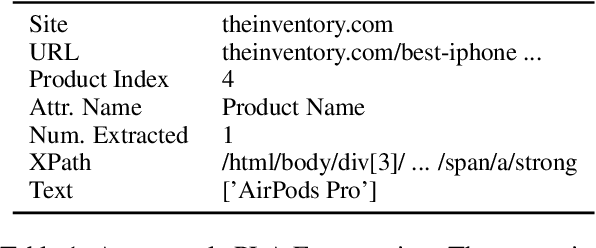

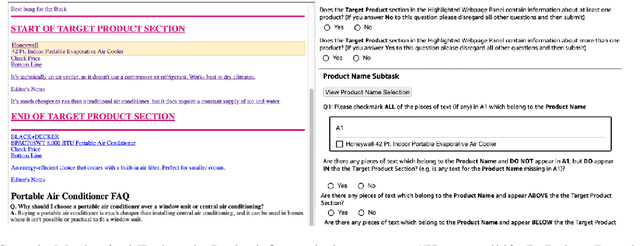
Abstract:Recently, neural models have been leveraged to significantly improve the performance of information extraction from semi-structured websites. However, a barrier for continued progress is the small number of datasets large enough to train these models. In this work, we introduce the PLAtE (Pages of Lists Attribute Extraction) dataset as a challenging new web extraction task. PLAtE focuses on shopping data, specifically extractions from product review pages with multiple items. PLAtE encompasses both the tasks of: (1) finding product-list segmentation boundaries and (2) extracting attributes for each product. PLAtE is composed of 53, 905 items from 6, 810 pages, making it the first large-scale list page web extraction dataset. We construct PLAtE by collecting list pages from Common Crawl, then annotating them on Mechanical Turk. Quantitative and qualitative analyses are performed to demonstrate PLAtE has high-quality annotations. We establish strong baseline performance on PLAtE with a SOTA model achieving an F1-score of 0.750 for attribute classification and 0.915 for segmentation, indicating opportunities for future research innovations in web extraction.
Answer Consolidation: Formulation and Benchmarking
Apr 29, 2022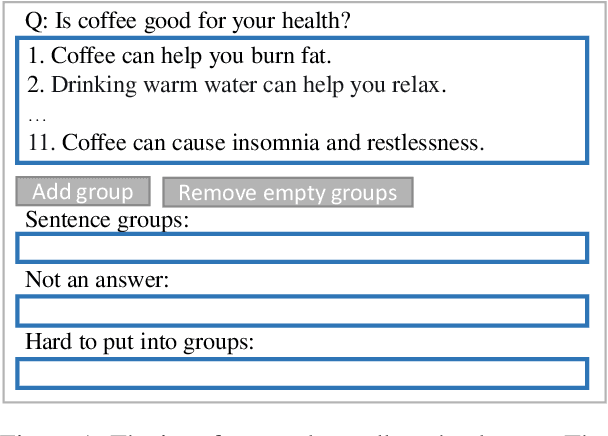
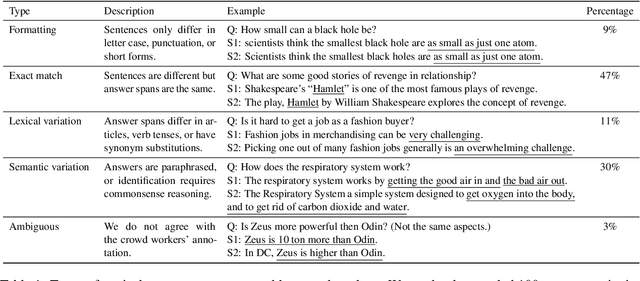
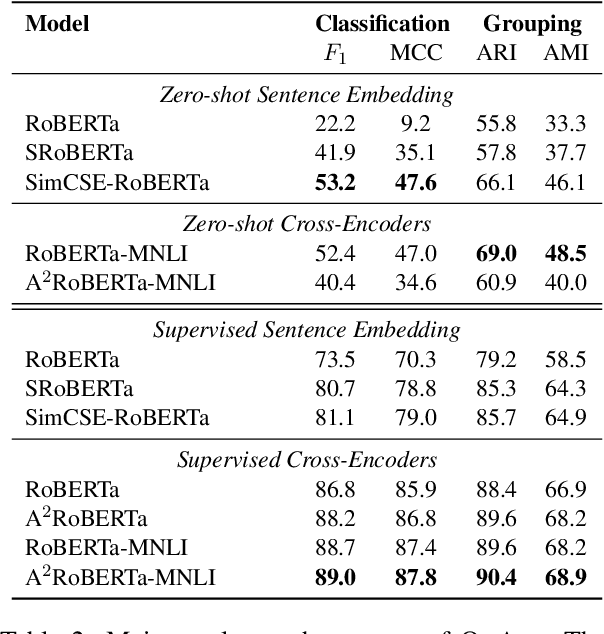
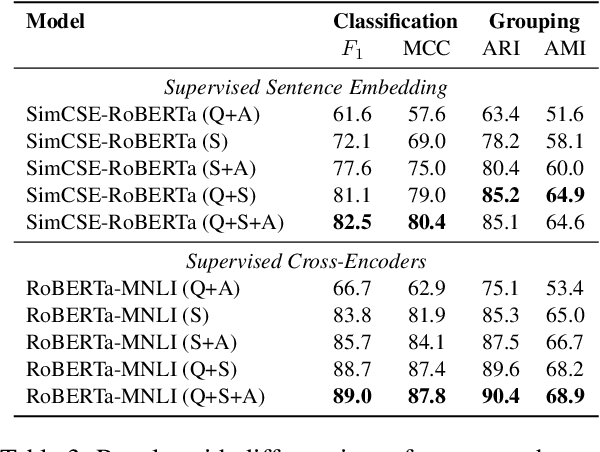
Abstract:Current question answering (QA) systems primarily consider the single-answer scenario, where each question is assumed to be paired with one correct answer. However, in many real-world QA applications, multiple answer scenarios arise where consolidating answers into a comprehensive and non-redundant set of answers is a more efficient user interface. In this paper, we formulate the problem of answer consolidation, where answers are partitioned into multiple groups, each representing different aspects of the answer set. Then, given this partitioning, a comprehensive and non-redundant set of answers can be constructed by picking one answer from each group. To initiate research on answer consolidation, we construct a dataset consisting of 4,699 questions and 24,006 sentences and evaluate multiple models. Despite a promising performance achieved by the best-performing supervised models, we still believe this task has room for further improvements.
Hidden Biases in Unreliable News Detection Datasets
Apr 20, 2021



Abstract:Automatic unreliable news detection is a research problem with great potential impact. Recently, several papers have shown promising results on large-scale news datasets with models that only use the article itself without resorting to any fact-checking mechanism or retrieving any supporting evidence. In this work, we take a closer look at these datasets. While they all provide valuable resources for future research, we observe a number of problems that may lead to results that do not generalize in more realistic settings. Specifically, we show that selection bias during data collection leads to undesired artifacts in the datasets. In addition, while most systems train and predict at the level of individual articles, overlapping article sources in the training and evaluation data can provide a strong confounding factor that models can exploit. In the presence of this confounding factor, the models can achieve good performance by directly memorizing the site-label mapping instead of modeling the real task of unreliable news detection. We observed a significant drop (>10%) in accuracy for all models tested in a clean split with no train/test source overlap. Using the observations and experimental results, we provide practical suggestions on how to create more reliable datasets for the unreliable news detection task. We suggest future dataset creation include a simple model as a difficulty/bias probe and future model development use a clean non-overlapping site and date split.
 Add to Chrome
Add to Chrome Add to Firefox
Add to Firefox Add to Edge
Add to Edge